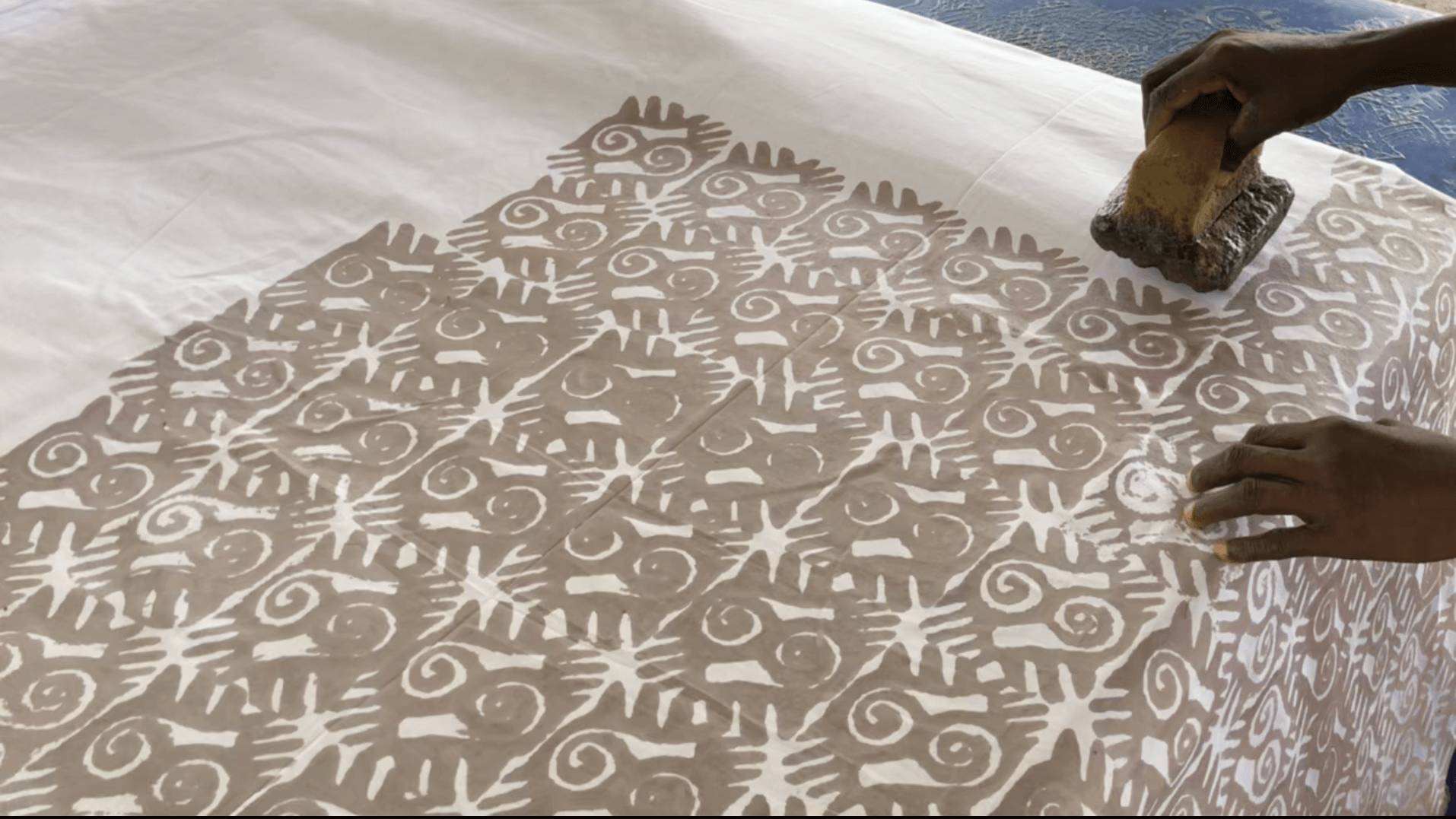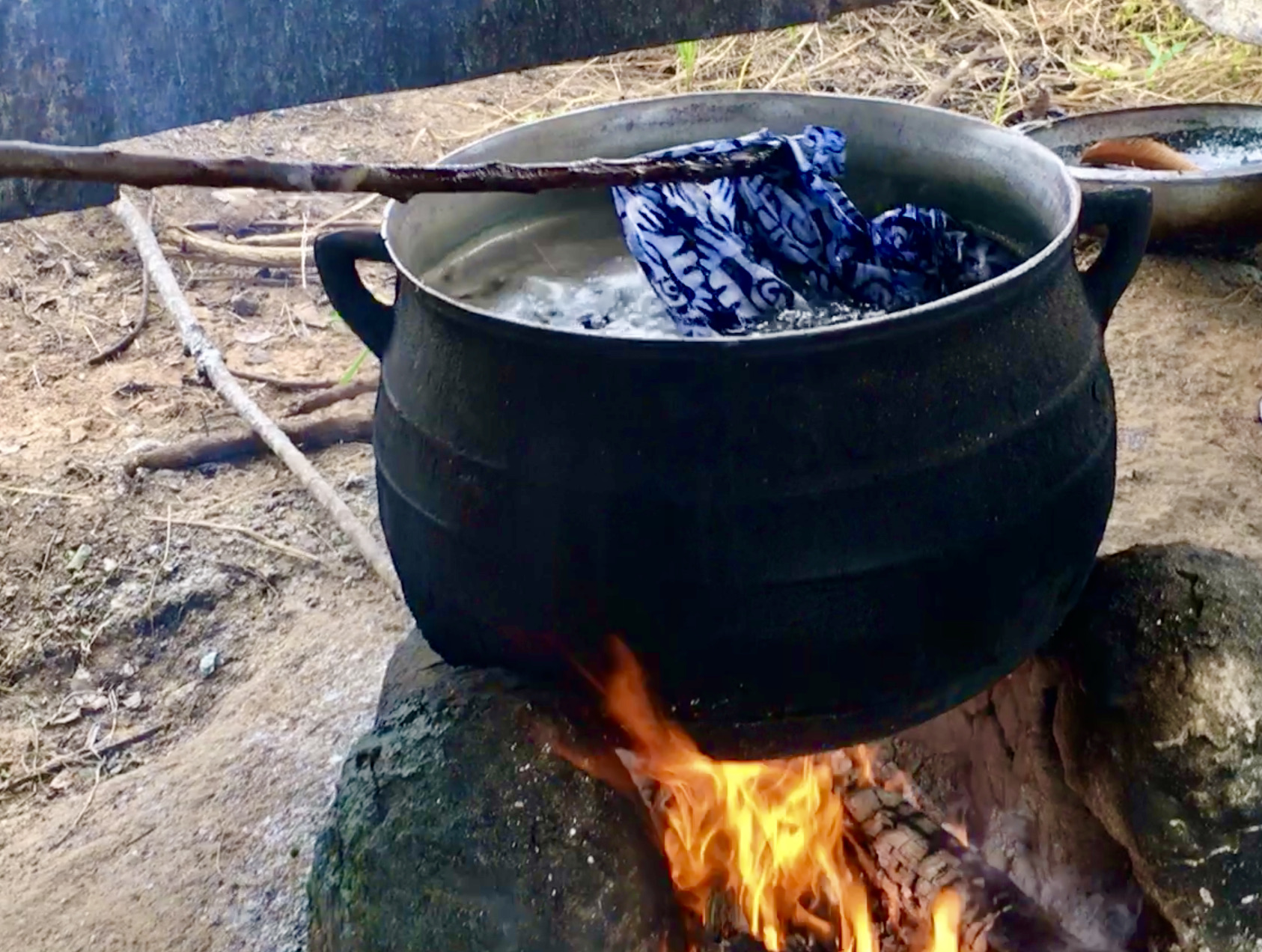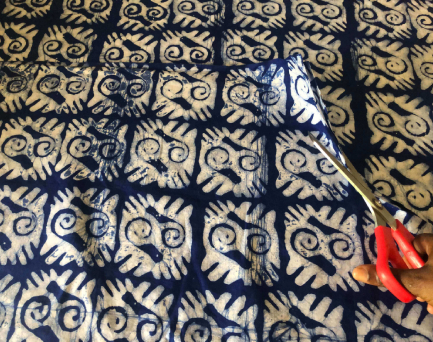Batik and tie-dye are traditional hand made fabrics that are produced by wax resistant dyeing of colourful patterns and designs on cotton in such a manner that some portions of fabric are prevented from absorbing dye through knotting or folding and the application melted wax whiles the open areas of fabric absorb dye.
Batik is made of five steps:
Step 1: Design and Creating the stamping form
The first step of creating batik fabric is to create the stamping mould made of foam.


Step 2: Application of Wax
Wax which is melted and the foam block is dipped into the wax and stamped on plain cotton fabric.
Step 3: Dyeing, drying and Oxidation
The cooled wax applied fabric is submerged in a dye bath for some minutes after which the fabric is lifted and dried on a drying line or laid on the ground to dry for the colour to set through the oxidation process. Depending on the design, the process may be repeated. Dyeing is done from the the lightest colour to the darkest.


Step 4: Dewaxing, rinsing second drying
Wax is removed from the fabric in large pot of boiling water, wax is collected to be reused. The fabric is washed with cold soapy water to remove excess dye and dried out a second time.
Step 5: Finishing
The fabric is ironed, prepared for cutting, sewing into the various products.



